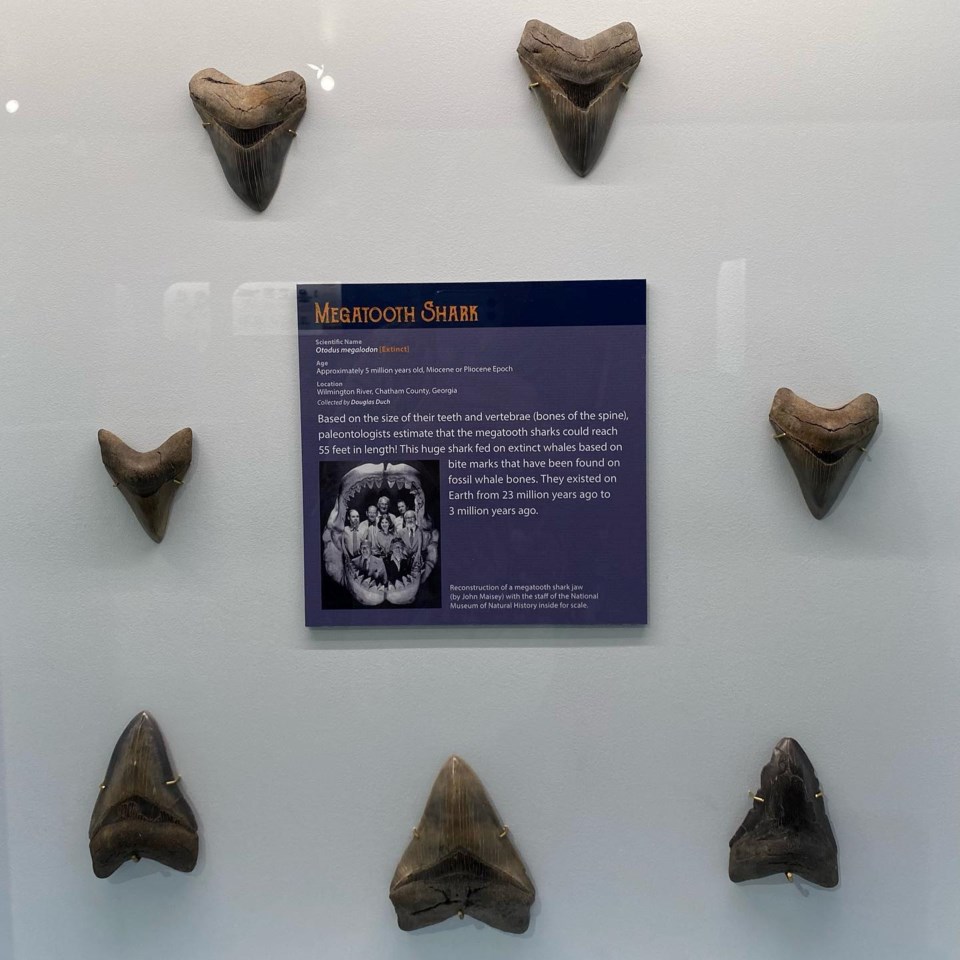In 1976, Georgia named the fossilized shark tooth as its official state fossil—a nod to the prehistoric marine giants that once swam in the ancient seas covering much of what is now Georgia.
These teeth, sometimes from species like the extinct Megalodon or Sand Tiger Shark, are remnants of an ecosystem that thrived millions of years ago during the Miocene and earlier epochs.
Because of the state's rich geological history, shark teeth are relatively common finds along parts of Georgia’s coastline and in certain inland areas. Over time, sediment from ancient ocean floors has been uplifted and exposed by natural erosion, development, and dredging—making it possible for modern-day explorers to discover fossilized teeth in the wild.

Most shark teeth found in Georgia range from less than an inch to a few inches long and are dark in color due to the fossilization process. The most frequently discovered species include extinct types of Sand Tiger Sharks and Mackerel Sharks, although larger, more dramatic Megalodon teeth do occasionally turn up.
Most of the Megalodon teeth found in Georgia aren’t collected on beaches—they’re recovered by divers from the bottoms of rivers and bays, where the teeth erode out of ancient rock layers and settle into the sediment. Because these massive teeth are heavier than the surrounding material, they tend to collect in low spots underwater, often requiring specialized gear and experience to retrieve.
Spending a day hunting for shark's teeth makes for a great summer adventure!
Tips for Fossil Hunting
-
Look at low tide for the best exposure of shell layers and debris fields.
-
Focus on shell beds or dark patches of sand and mud, where teeth often accumulate.
-
Bring a small hand sifter or colander to help sort through material.
-
Water shoes or boots are a must for muddy or sharp-shell areas.
-
Be patient and observant—teeth often look like small, shiny black triangles.
Best Places to Look for Shark Teeth in Georgia
1. Shark Tooth Beach – Jekyll Island
Accessible by bike or a walk from Riverview Drive, this quiet stretch is well-known among locals for being rich in marine debris and fossils. It’s covered with shells, and sharp eyes can often spot small black teeth mixed in.
2. “Shark Tooth Island” – Savannah River
This spoil island, accessible by boat from Savannah or Tybee Island, was formed from dredging activity and is packed with fossil material. Guided tours are available and recommended since the terrain can be tricky and muddy.
3. St. Simons Island
A lesser-known access point near the boat ramp offers decent odds of finding small shark teeth, especially just after high tide recedes.
4. Beaches near Brunswick and along tidal rivers
Some inland spots near the coast—especially where dredging or erosion occurs—can also yield teeth. Check creek banks and areas with exposed shell layers.
Georgia's coast offers a unique mix of natural beauty and prehistoric discovery. With a little effort, even beginners can uncover their own piece of ancient history—no digging required.




